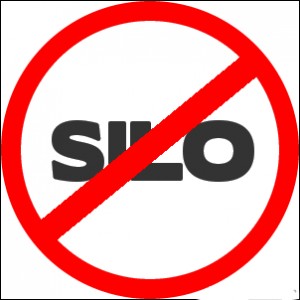GreenRope Blog
Title search: ✖
|
Show All (637)
#CoolerChat (7) All About GreenRope (172) Content Marketing (66) CRM (191) Customer Experience (79) Digital Transformation (8) Email Marketing (6) Event Recaps (2) Everything Small Business (46) How-To (136) In the Clearing with Lars (25) Infographics (4) Marketing (149) Marketing Automation (60) Monthly Updates (26) Press Release (1) Sales (76) SMB (140) Social Media (20) Tidbits for You (116) Websites & SEO (4) Weekly Roundup (16)
10 Surprising Things You Didn't know about Client Services & Search Marketing Manager, Lisa Frampton
Disqualifying Leads Without Alienating Them as Future Customers - Part 2: Cultivating Non-Leads with Automated Marketing
4 Ways to Get Your Email Marketing in Front of the Right Audience Through Personalization & Segmentation
Total Cost of Ownership: What does it mean and how can you avoid costly, unsuccessful implementations.
|
Silo Smashing: Digital Darwinism
The digital transformation is more of a digital evolution. A transformation is defined as “a thorough change in form or appearance.” Evolution, on the other hand, is defined as “a gradual development of something.” The digital shift we are experiencing today is ongoing so we need to respond, not just one time, but on a consistent basis. The business landscape continues to evolve as a result of the constant technological innovations that are taking place. This new technology that we have access to enables the customer to become more empowered than ever before. Companies must adapt to support those changes. While some new companies have embraced the changes, others are still confused on what it means, how to do it, and more than anything, why they have to adapt. The internal workings of a business automatically affect the external interactions. To use a metaphor, when you eat healthy foods, exercise regularly, and are generally happy with your life, you tend to look better and healthier to those around you. The same goes with business. When a company’s employees are not getting what they need from within—from each other—then the product or service they produce will suffer in the end. Traditional Business Structure Departmental silos can simply no longer support today’s business landscape. Why? The Silo Mentality as defined by the Business Dictionary is a mindset present when certain departments or sectors do not wish to share information with others in the same company. This type of mentality will reduce efficiency in the overall operation, reduce morale, and may contribute to the demise of a productive company culture. The traditional business structure emphasizes a top-down approach, with senior executives at the top (baby-boomers), then managers and directors (baby boomers), and finally, the ‘general’ employees (millennials) at the bottom. While this structure may have worked in the past, the reality in 2014, is that it no longer functions effectively with the current trends in technology nor does it support the millennial mentality. The main reason businesses should evolve from top-down to a more network structure is that it improves all relationships including, employee to employee, employee to customer, customer to customer, and so on. Relationships make up your reputation and your image so focus on nurturing those before anything else. What does a future business model look like? Well, there is really no answer to this. The digital evolution is moving so fast that it is difficult to pinpoint the exact ‘right’ model. However, I can say one thing: The new business model is a network, or circular model—not a disjointed line of titles. There are a few main focal points of the new business model:
All of these focal points stem from one thing: company culture. I seem to come back to this a lot, but only because it’s profoundly important to make any business work. Without a company culture, which constitutes the mission, values, goals, and identity of a business, it cannot move forward with strategy and operations. How many of you worked without a direction or strategy behind what you’re doing? I have, and guess what? It is frustrating, and almost never works because I had no direction and no real end goal. For more on company culture check out the following blog posts: It is from that culture, the invisible rope that ties everyone together, that employees are better able to communicate and collaborate. This is where smashing the silos becomes crucial. Once your organization is heavily rooted in its mission and values, you will be better able to hire employees who are aligned with those. What does this mean? It means everyone is there for the same reason, with the same goal in mind. It eliminates tensions between departments and more than anything, improves the customer experience. How, you ask? Well, employees who want see your business succeed will naturally be more motivated and innovative in their work and interactions. Now that we’ve established that a strong company culture breeds motivated employees, we can look at how smashing silos will improve every aspect of your business. Here are the top benefits of the new business structure:
Here are a few key things to think about before smashing your silos:
|
